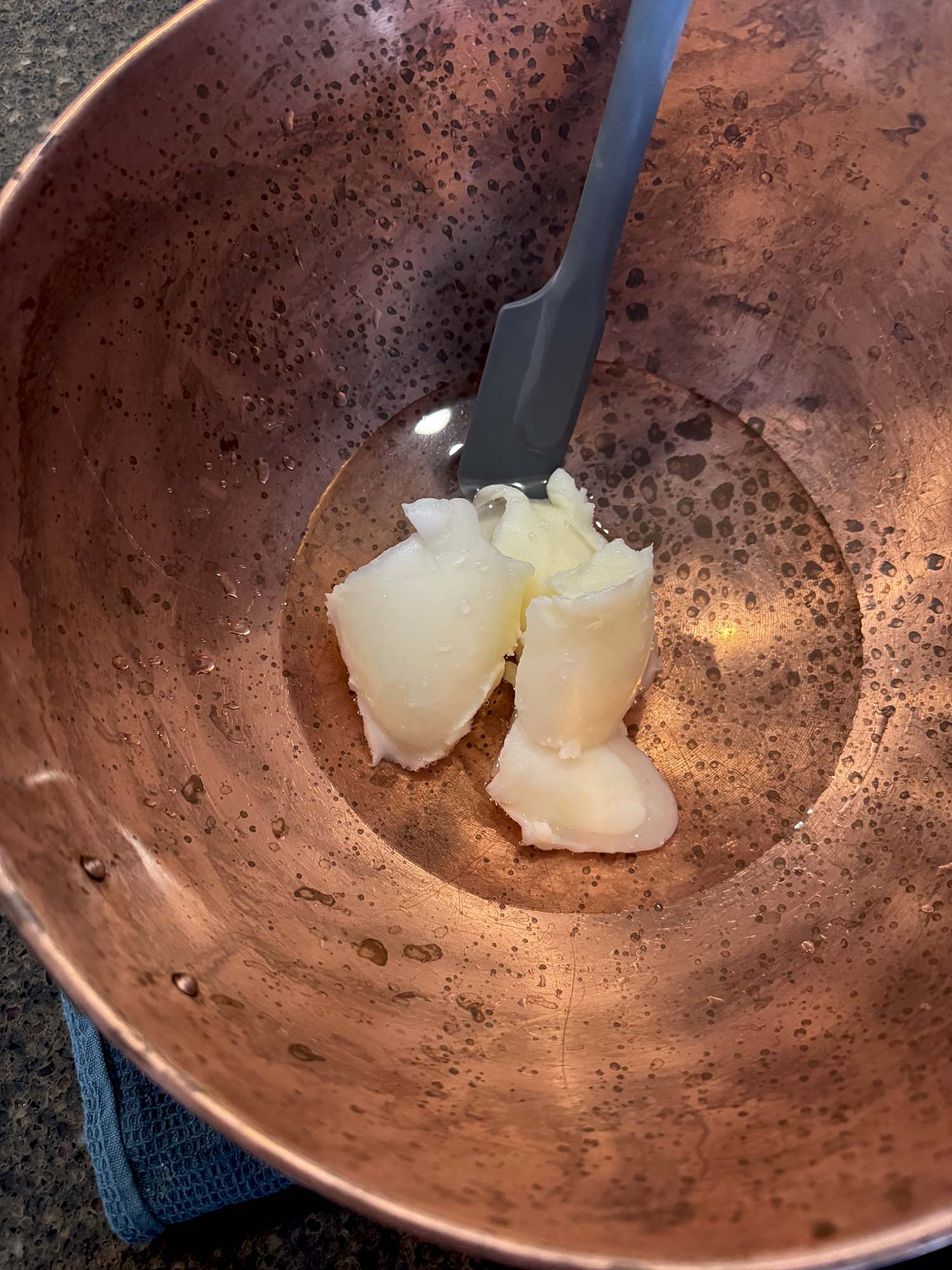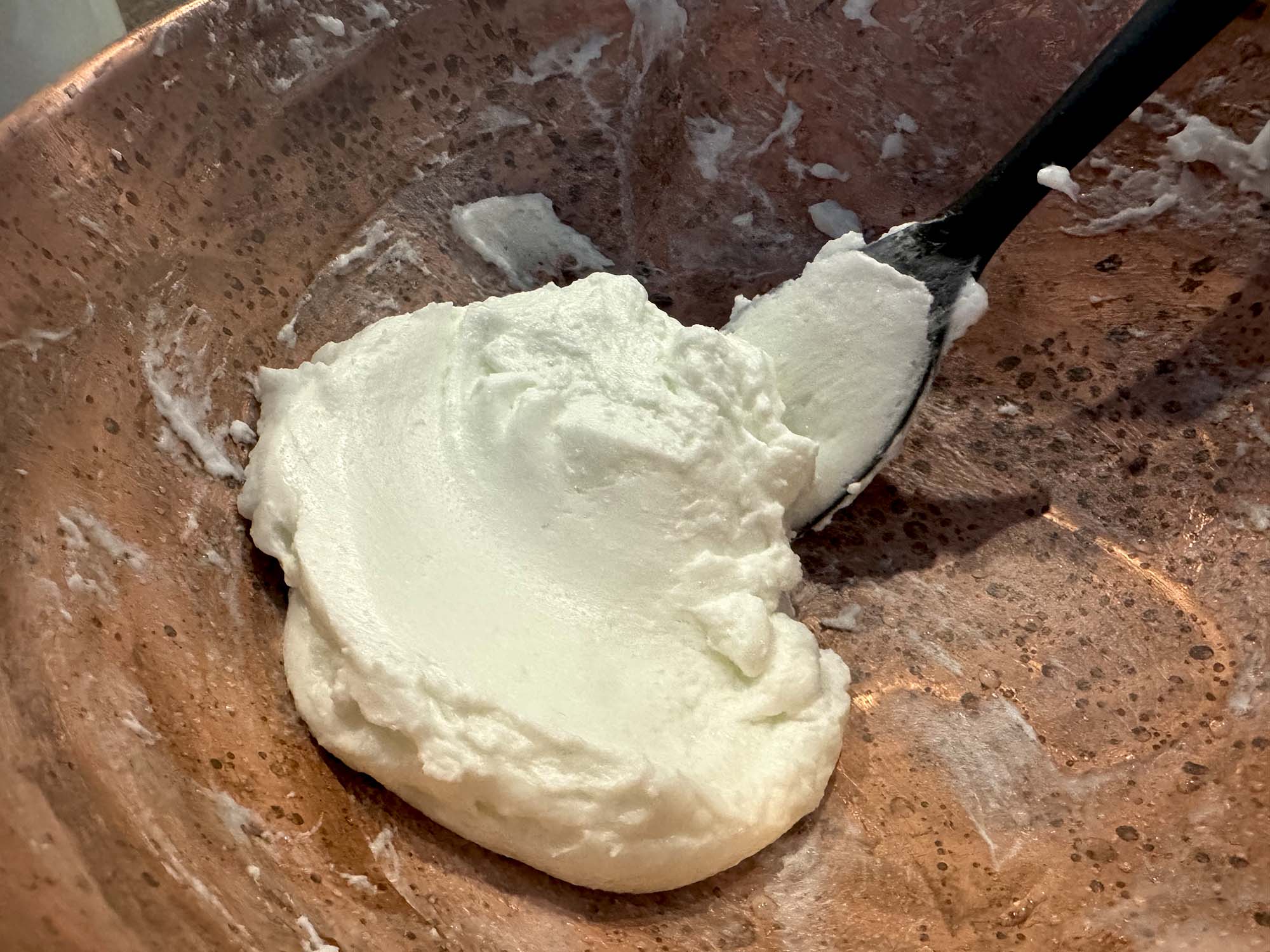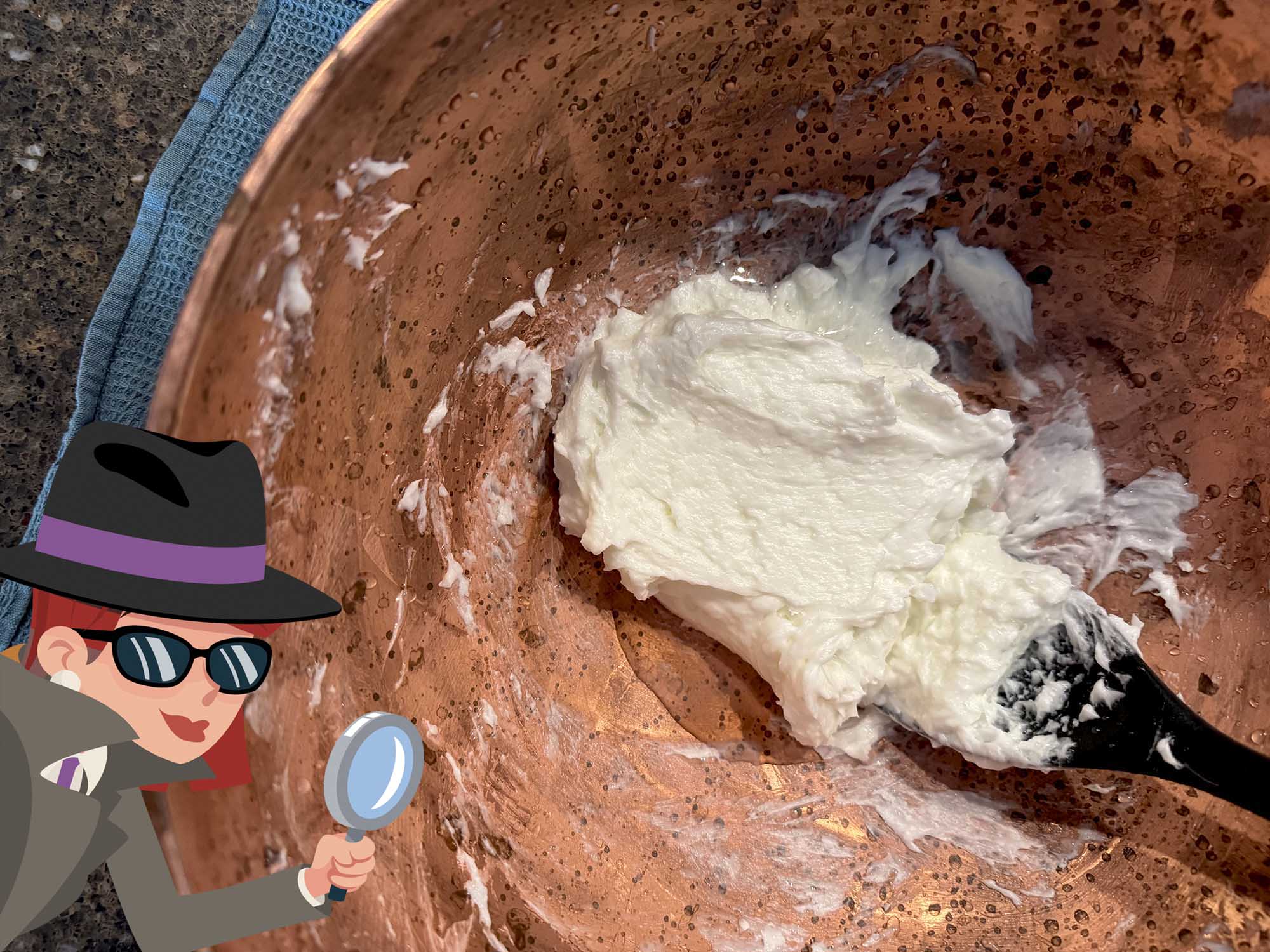If you read Shata Dhauta Ghrita (100x Washed Ghee), then you already know all about the luxurious whipped emulsion known as 100 times washed ghee. The deeply hydrating cream is said to penetrate all seven layers of the skin and is reputed to help with everything from hyperpigmentation and fine lines to inflammatory conditions like rosacea and sunburns.
In the post, I shared some history and explored the ancient process of hand-washing regular store-bought ghee into a creamy, skin-loving masterpiece (and the minor chaos it caused in my kitchen). I still have a small container of the Shata Dhauta Ghrita I made for that blog post nearly two years ago (yes, I made a LOT). Miraculously, it still appears as fresh as the day I made it and the emulsion is still holding steady.
I’m utterly fascinated by the magic that creates a shelf-stable emulsion without the need for emulsifiers or preservatives.
How is this possible?
Part of the magic lies in the process itself. The repetitive interaction between water and fat produces mild hydrolysis (fat splitting), where triglycerides are broken down into free fatty acids and glycerol. This slow and steady process makes the fat molecules more hydrophilic (water-attracting) over time, improving their ability to bind with water.
The copper bowl acts as a catalyst. The physical interaction between copper ions and the fat-water mixture may also act as a catalyst for fat splitting, further refining the ghee into a more bioavailable form.
Incidentally, this infusion of copper also contributes to both the therapeutic and cosmetic properties of the cream. Copper is an essential trace mineral that supports the synthesis of collagen and elastin, two proteins responsible for maintaining skin elasticity and firmness. The copper content in Shata Dhauta Ghrita (as well as washed tallow) imparts natural anti-inflammatory properties and can help reduce wrinkles, fine lines and sagging skin by promoting these structural proteins.
By contrast, blending oil and water in, say, a blender, introduces all the water at once, which overwhelms the fat’s ability to encapsulate it effectively. Without gradual incorporation, large amounts of unbound water remain in the mixture, making it prone to separation.
No preservative needed
As the slow, repetitive washing process gradually incorporates small amounts of water into the fat matrix, it creates micro-droplets of water that are tightly encapsulated by fat, leaving virtually no free water available. Any unincorporated water gets poured off with each washing cycle, further refining the product.
Microbial growth (bacteria, mold or yeast) requires free water to thrive. Since Shata Dhauta Ghrita has very low water activity due to its tightly bound water, it becomes an inhospitable environment for microbes.
The result is a stable emulsion that is naturally resistant to spoilage without the need for emulsifiers or preservatives — a feat that still amazes me every time I think about it.
Could this ancient Ayurvedic technique work with other fats, such as pastured tallow? After all, tallow is another deeply nourishing fat that has earned its place in natural skincare. Can it be washed into a viable emulsion too?
Inquiring minds want to know!
Experimenting with tallow
Longtime readers of this blog know that tallow has long been a favorite in my skincare arsenal. Like ghee, it’s rich in saturated fats and fat-soluble vitamins A, D, E, and K, which make it incredibly nourishing for the skin. It’s also packed with stearic acid and oleic acid — two fatty acids that support the skin barrier and promote elasticity.
But can tallow achieve the same whipped texture and stability as washed ghee? There’s only one way to find out!
I started with about 1/2 a cup of high quality pastured tallow and added about the same amount of distilled water to my copper mixing bowl.

With a silicone spatula, I began blending the tallow and water together. At first, the fat just moves around in the water, but after a few minutes it starts to come together.
After a couple of minutes of mixing, I carefully poured off the water while keeping the fat in the bowl, added fresh distilled water and continued mixing. With each cycle, the tallow became noticeably lighter and fluffier. *
(Halfway through the mixing process, my husband walked into the kitchen and asked “Whatcha make’n?” eyeing my bowl of what I’m sure looked like frosting with a hopeful expression. Poor guy, he did the same thing when I made the washed ghee two years back 🥹)
* For a more complete description of the process, refer to Shata Dhauta Ghrita (100x Washed Ghee).
The results
Disappointingly, washed tallow never achieved the same ultra-light texture of Shata Dhauta Ghrita. The washing process did create a creamy whipped product that looked promising, but it was much heavier and more oily feeling. It simply didn’t melt into the skin as well as washed ghee.
A couple of weeks later, the washed tallow seems to be resisting separation, but will it last as long as my Shata Dhauta Ghrita…?

Probably not
I did some more reading and found that tallow is much more resistant to hydrolysis than ghee due to its high proportion of long-chain saturated fats — namely, stearic and palmitic acid. These long-chain fatty acids are quite hydrophobic and resistant to binding with water. Tallow contains negligible amounts of short and medium chain fatty acids.
On the other hand, ghee has a relatively high proportion of short- (e.g. butyric acid) and medium-chain fatty acids (e.g. caprylic and capric acids) — around 13-24%. These shorter chains are much more reactive and easier to hydrolyze, even under mild conditions like mechanical agitation with water.
This difference is due to the fatty acids’ molecular structures. Short chain fatty acids contain fewer than 6 carbon atoms that are more water-soluble, have lower melting points and possess weaker intermolecular forces compared to medium and long chain fatty acids, which have higher melting points and contain 6-12 and 13-21 carbon atoms, respectively.
So it’s likely that the fat’s triglyceride composition matters here. The magic of Shata Dhauta Ghrita isn’t just in the process — it’s in the ghee itself.
While not a true emulsifier, the short-chain (and to a lesser degree, medium-chain) triglycerides acts as a sort of natural prelude to emulsification in the context of the copper vessel washing process. The shorter the chain, the more easily water molecules can penetrate between the fatty acid molecules, facilitating the breakdown of ester bonds and the separation of fatty acids from the glycerol backbone — AKA hydrolysis.
This is why my washed tallow was so heavy and oily. It didn’t hydrolyze and my end product was basically just plain ol’ whipped tallow with little-to-no water content. So not an emulsion at all.
Bummer! But even “failed” experiments can yield good things. I’m a sucker for learning why things work (or don’t work). Even though it didn’t transform into the whipped cloud-like texture of washed ghee, the process still created a creamy, nourishing product with a different — yet still beneficial — skin feel.
And who knows? With some tweaks to the method or maybe even a hybrid approach (ghee-tallow fusion, anyone?), there may still be room to refine the technique.
Have you tried making 100 times washed ghee or used the technique to wash other fats? I’d love to hear about your experience — drop me a comment below. Let’s keep the curiosity rolling!




One Response
Excellent article. I wish more people would publish experiments with outcomes that don’t turn out as expected. This is the real process of scientific inquiry. Positive or negative results are equally instructive. Great work!